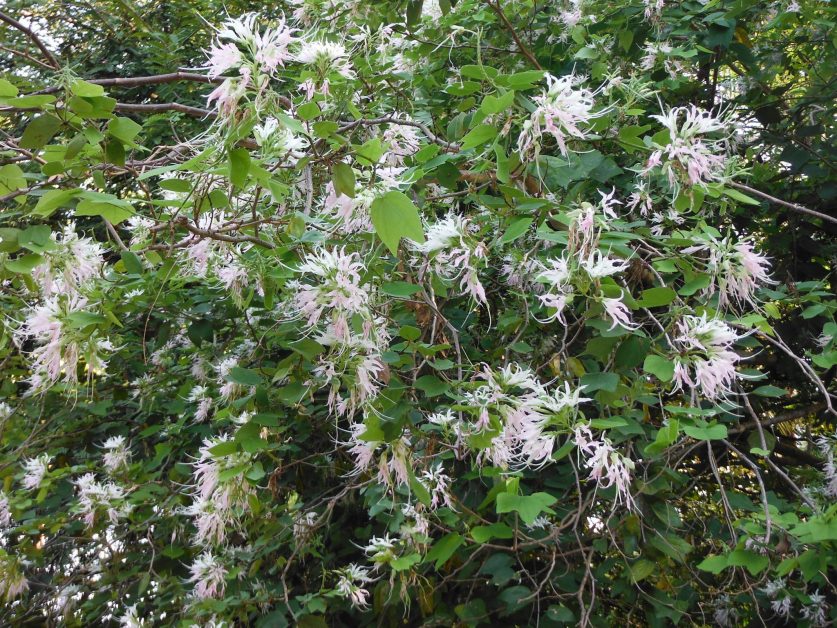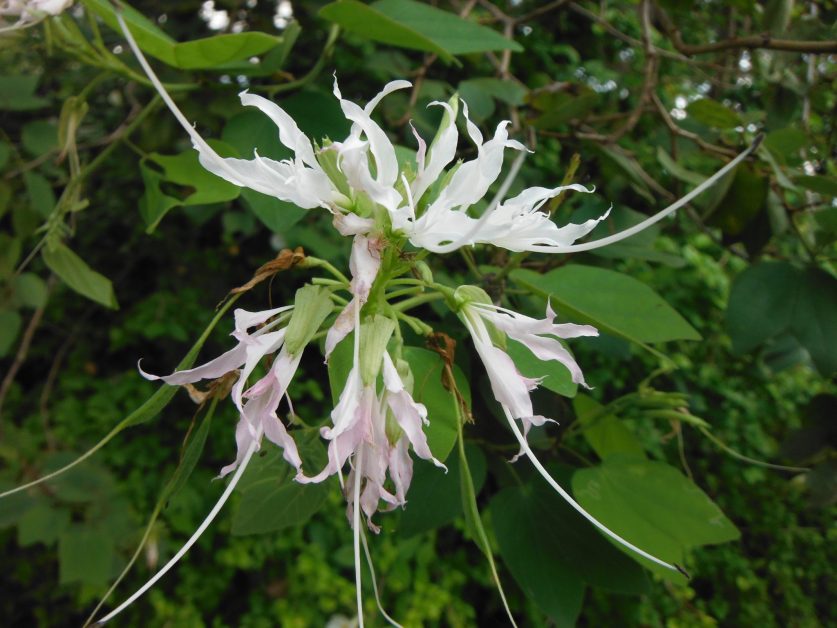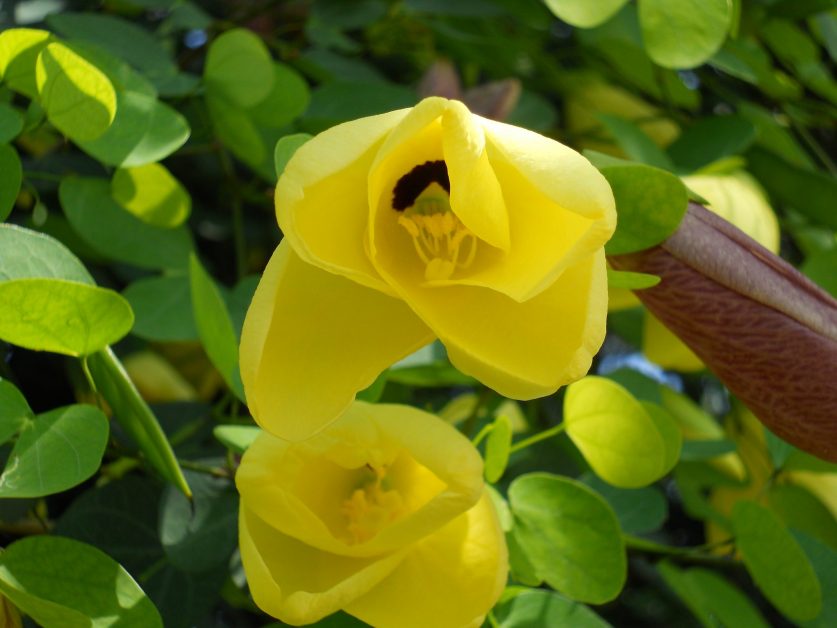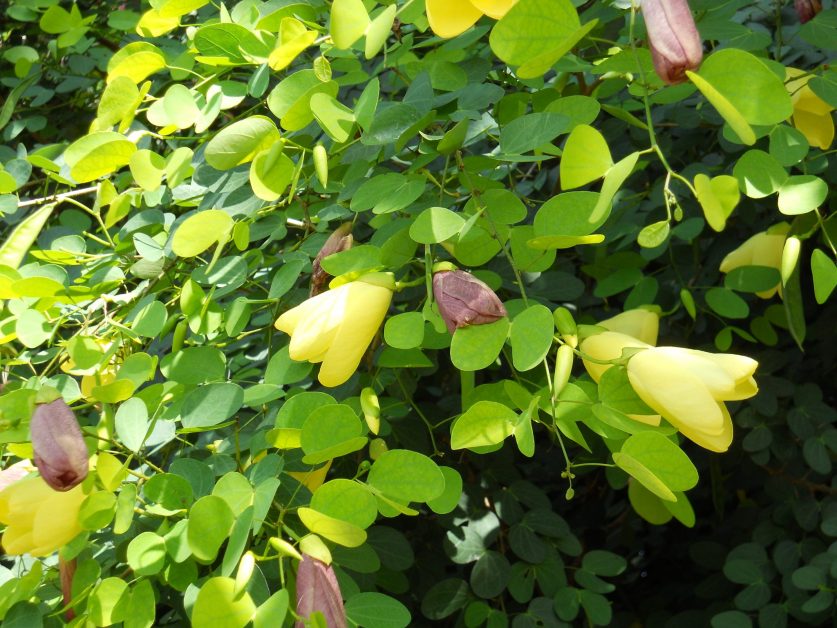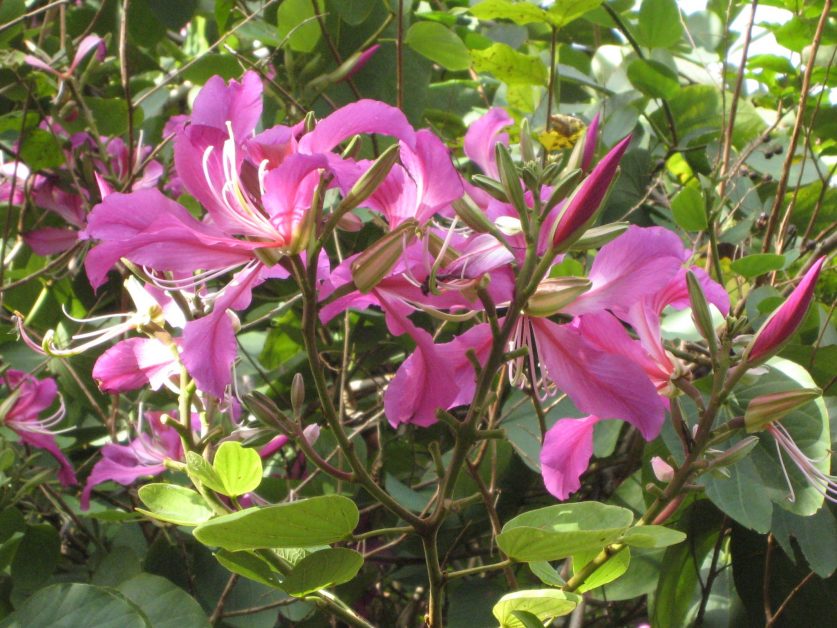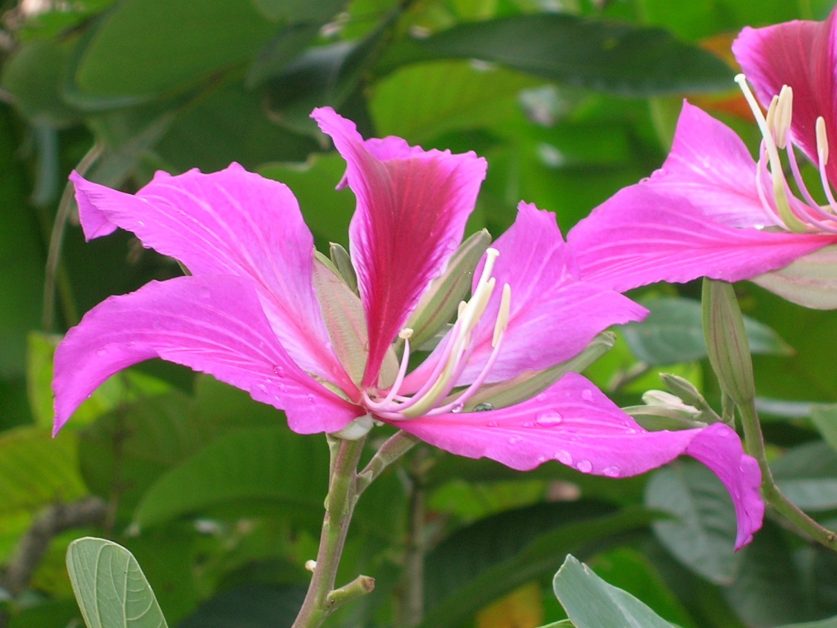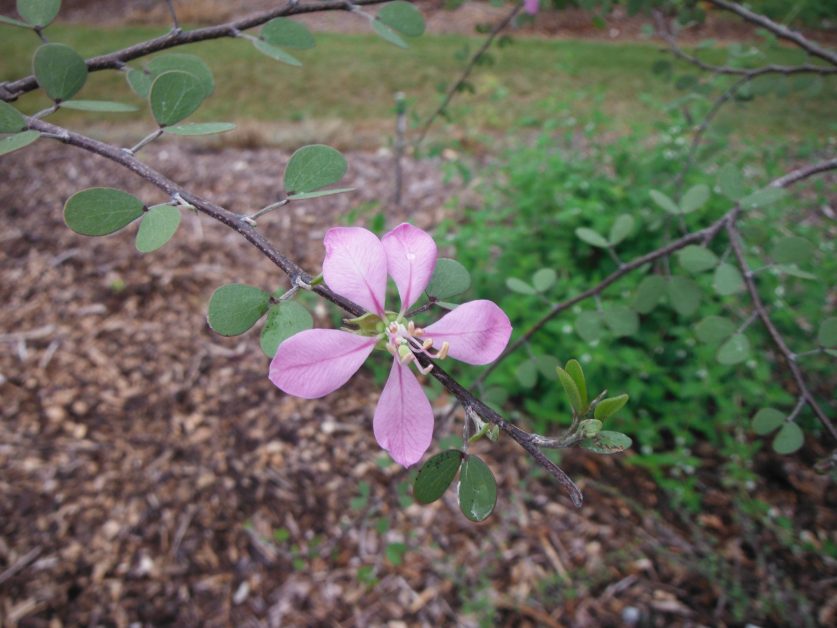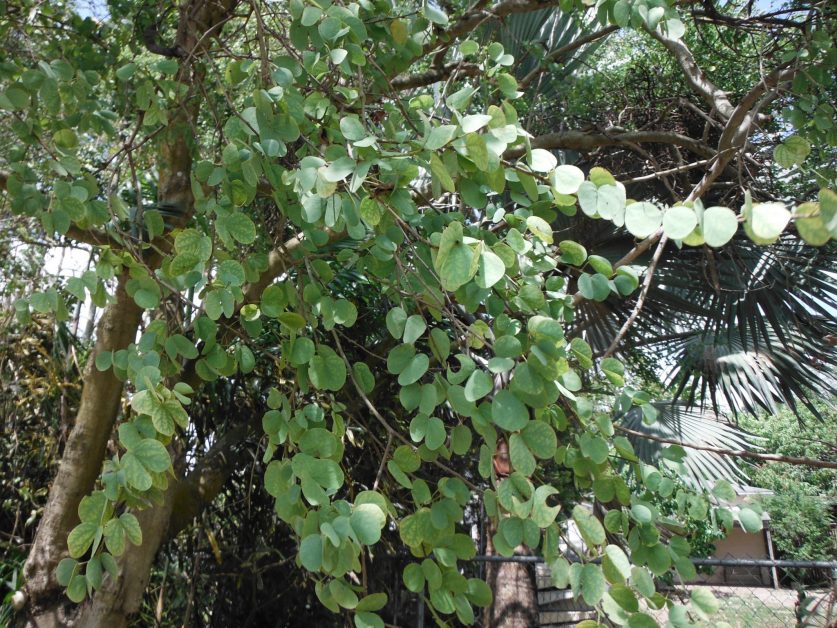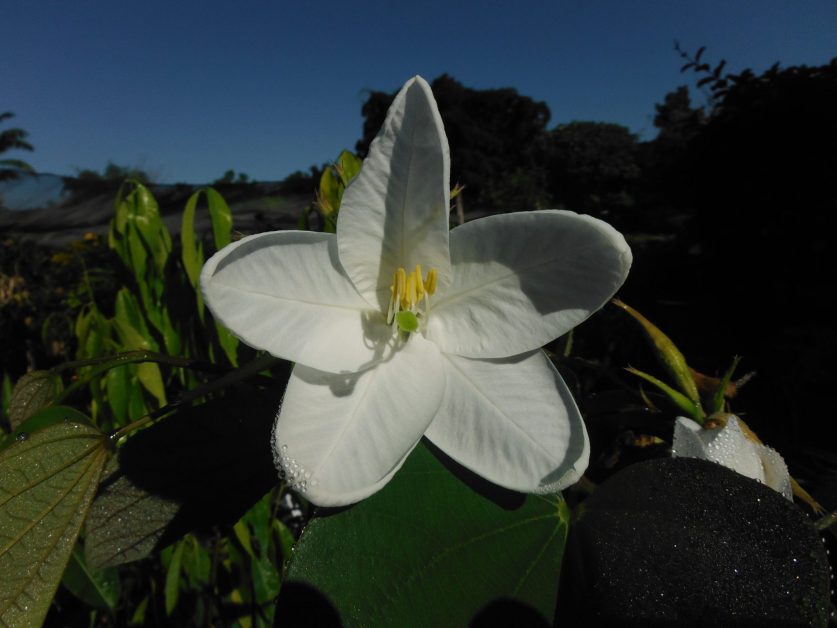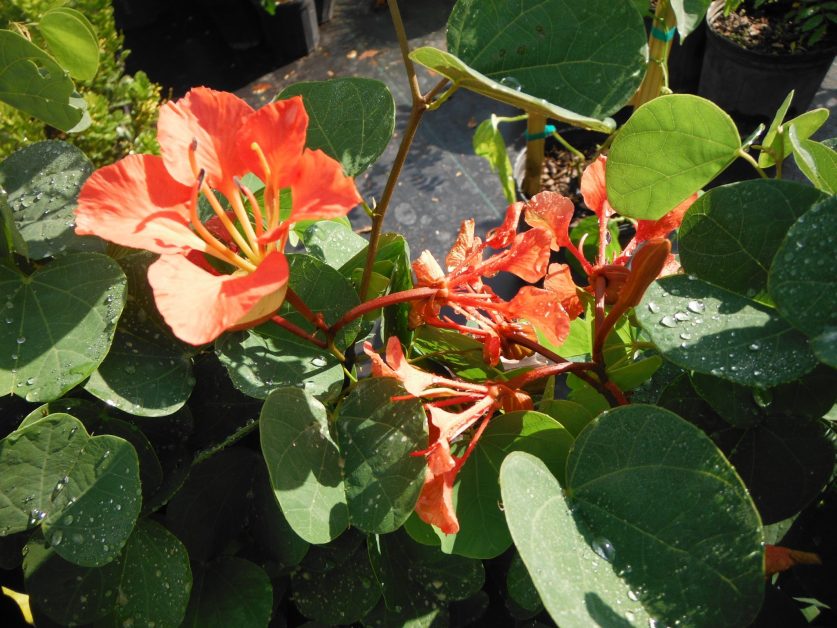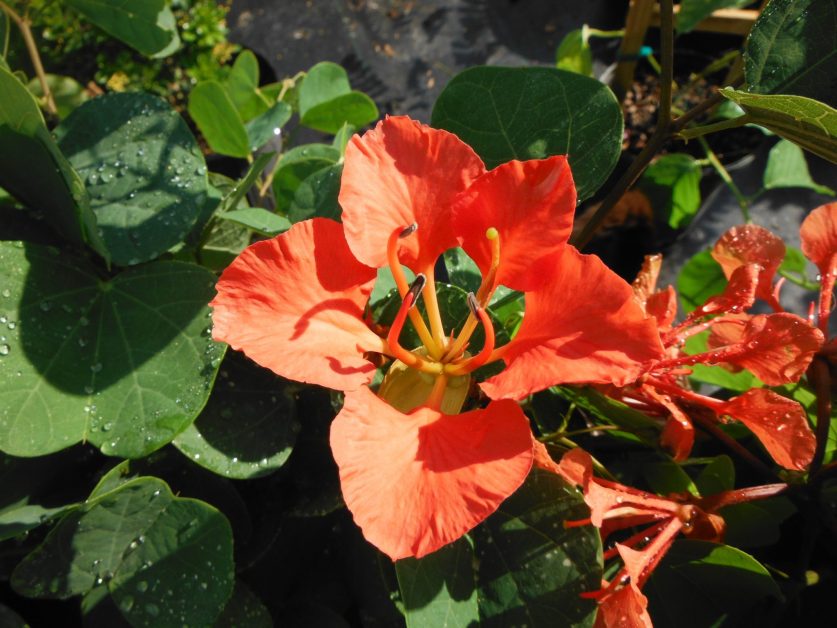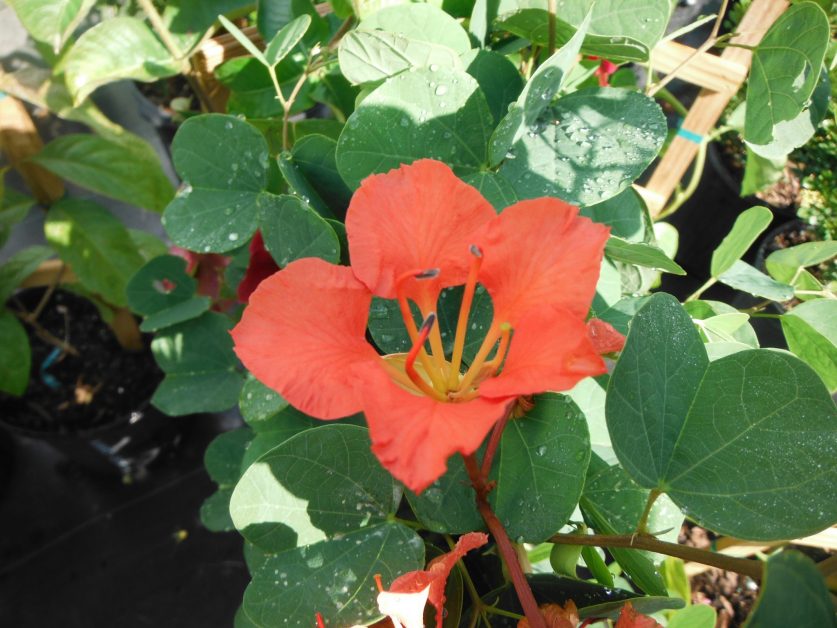A Bauhinia for Almost Any Landscaping Need
Bauhinia is a large genus — more than 500 species — of trees and shrubs native to both the Old World and New World tropics. Typically, their leaf pairs are arranged in a butterfly wing, or back-to-back, configuration.
Therein lies an interesting piece of folklore: Among Aboriginal Australians, it is common for spouses to be far apart in age, so that the husband and his wife’s mother are about the same age. Aboriginal custom — known as Jigal or Jugal — aims to keep those two from becoming chummy. They are forbidden from facing each other directly, so the back-to-back Bauhinia leaves exemplify the desired relationship. Accordingly, Aboriginals refer to Bauhinia species as Mother-in-Law/Son-in-Law Trees.
We at Richard Lyons’ Nursery have no intention of prying into your familial life, but would instead like to recommend several Bauhinia species for your consideration:
Bauhinia acuminata — This Asian native, commonly known as the Dwarf White Bauhinia or White Orchid Tree, reaches just 6-10 ft. tall at maturity. It blooms most of the year in southern Florida, producing beautiful white, fragrant flowers. This species is quite amenable to container culture. Like all Bauhinias, it flowers most prolifically when grown in full sun.
Bauhinia blakeana — This tree was discovered on the grounds of a monastery in Hong Kong. It may be a hybrid between B. variegata and B. purpurea, It was adopted as the floral emblem of Hong Kong in 1965 and now also appears on the territory’s flag, coat of arms, and coins. What makes the tree so popular is its orchid-like, showy, large purple-magenta flowers. In southern Florida, it blooms from November to April, thus making it a significant nectar source for the hummingbirds that overwinter in the region. B. blakeana reaches 20-40 ft. in height, with a crown spread of 20-25 ft.
Bauhinia divaricata — Commonly known as the Butterfly Orchid Tree or Mexican Orchid Tree, this small-statured species produces airy pink and white flowers virtually year-round. It has an attractive spreading crown and matures to 12-20 ft. in height. It is a valuable nectar source not only for butterflies — especially the Giant Swallowtail — but also ruby-throated hummingbirds.
Bauhinia galpinii — This species, native to parts of southern and eastern Africa, is a spreading shrub, maturing to dimensions of 8-10 ft. high and 10-15 ft. wide. It makes an excellent subject to grow on an espalier, and can be cut back hard without repercussions. Its red-orange flowers appear profusely during the warmer parts of the year, attracting butterflies. B. galpinii is cold-hardy down to at least the upper 20s. Once established, it is both drought- and wind-tolerant.
Bauhinia grandidieri — This is another dwarf species that can be espaliered. Because of its small leaves, it also has proven popular for bonsai and general container culture. Its orchid-like flowers are bluish-purple in hue, appearing during the warmer times of the year. B. grandidieri should be grown in well-drained soil.
Bauhinia rufescens — Native to northeastern Africa, this is another small-leafed species and, like the others, it makes an excellent subject for bonsai culture. To get some idea of its drought-resistance, consider that it is deemed the most palatable camel browse in the Sudan. That trait also hints at its ability to spring back from heavy pruning, even if you don’t have a camel. It flowers in a range from white to greenish-yellow, and has a pleasant fragrance.
Bauhinia tomentosa — This Bauhinia has been accorded many common names, incuding St. John’s Tree, Yellow Bauhinia, and Yellow Bell Orchid Tree. It is normally multi-stemmed, reaching a height of about 12 ft. at maturity. Its species name refers to its sometimes-fuzzy bark. Drooping branches and bell-shaped, yellow flowers — with a maroon blotch in the center — make B. tomentosa a popular ornamental plant.
- Bauhinia divaricata (Butterfly Orchid Tree)
- Bauhinia divaricata (Butterfly Orchid Tree)
- Bauhinia tomentosa (St. Thomas Tree)
- Bauhinia tomentosa (St. Thomas Tree)
- Bauhinia blakeana (Orchid Tree)
- Bauhinia blakeana (Orchid Tree)
- Bauhinia grandidieri (Blue Orchid Tree)
- Bauhinia rufescens (Small Leaf Orchid Tree)
- Bauhinia acuminate (Dwarf White Orchid Tree)
- Bauhinia galpinii (Pride of De Kaap)
- Bauhinia galpinii (Pride of De Kaap)
- Bauhinia galpinii (Pride of De Kaap)
